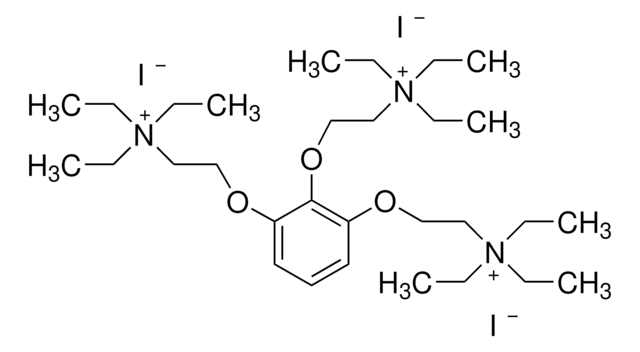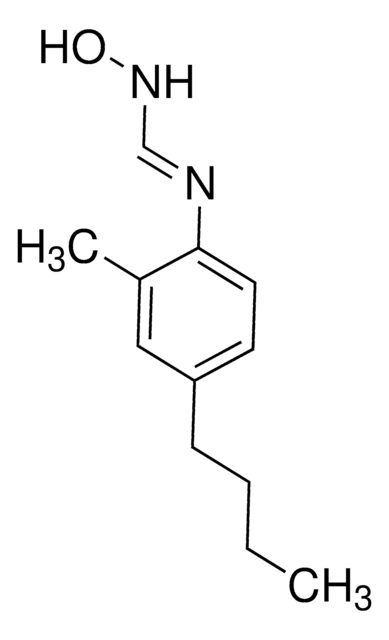H127
p-Fluorohexahydro-sila-difenidol hydrochloride
powder, ≥98% (HPLC)
Synonyme(s) :
Cyclohexyl-(4-fluorophenyl)-(3-N-piperidinopropyl)silanol hydrochloride, P-F-HHSiD hydrochloride
About This Item
Produits recommandés
Niveau de qualité
Pureté
≥98% (HPLC)
Forme
powder
Couleur
white to beige
Solubilité
H2O: slightly soluble 1.5 mg/mL
45% (w/v) aq 2-hydroxypropyl-β-cyclodextrin: >14 mg/mL
ethanol: soluble
Chaîne SMILES
Cl[H].O[Si](CCCN1CCCCC1)(C2CCCCC2)c3ccc(F)cc3
InChI
1S/C20H32FNOSi.ClH/c21-18-10-12-20(13-11-18)24(23,19-8-3-1-4-9-19)17-7-16-22-14-5-2-6-15-22;/h10-13,19,23H,1-9,14-17H2;1H
Clé InChI
JMTYYLMGSBSPPK-UHFFFAOYSA-N
Informations sur le gène
human ... CHRM3(1131)
Application
- as the M3/muscarinic acetylcholine receptor antagonist to study its involvement in carbachol induced Egr-1 biosynthesis using human neuroblastoma cells
- as M3 receptor antagonist to test its involvement on N,N-diethyl-m-toluamide (DEET)-induced angiogenesis in human umbilical venous endothelial cells (HUVEC)
- in a study to examine the role of aclidinium on human fibroblast to myofibroblast
Actions biochimiques/physiologiques
Caractéristiques et avantages
Code de la classe de stockage
11 - Combustible Solids
Classe de danger pour l'eau (WGK)
WGK 3
Point d'éclair (°F)
Not applicable
Point d'éclair (°C)
Not applicable
Équipement de protection individuelle
Eyeshields, Gloves, type N95 (US)
Certificats d'analyse (COA)
Recherchez un Certificats d'analyse (COA) en saisissant le numéro de lot du produit. Les numéros de lot figurent sur l'étiquette du produit après les mots "Lot" ou "Batch".
Déjà en possession de ce produit ?
Retrouvez la documentation relative aux produits que vous avez récemment achetés dans la Bibliothèque de documents.
Notre équipe de scientifiques dispose d'une expérience dans tous les secteurs de la recherche, notamment en sciences de la vie, science des matériaux, synthèse chimique, chromatographie, analyse et dans de nombreux autres domaines..
Contacter notre Service technique








